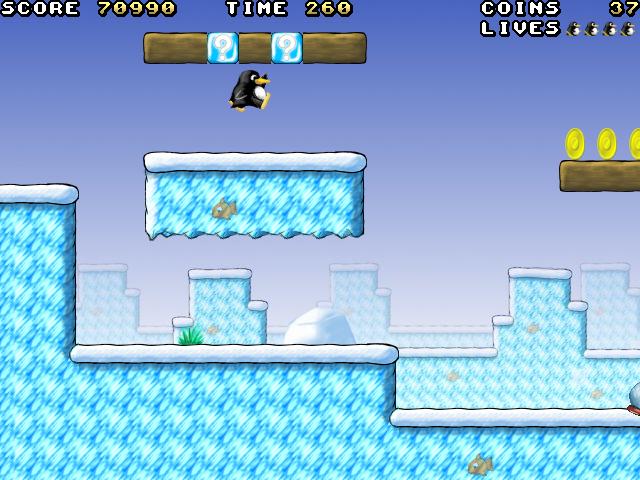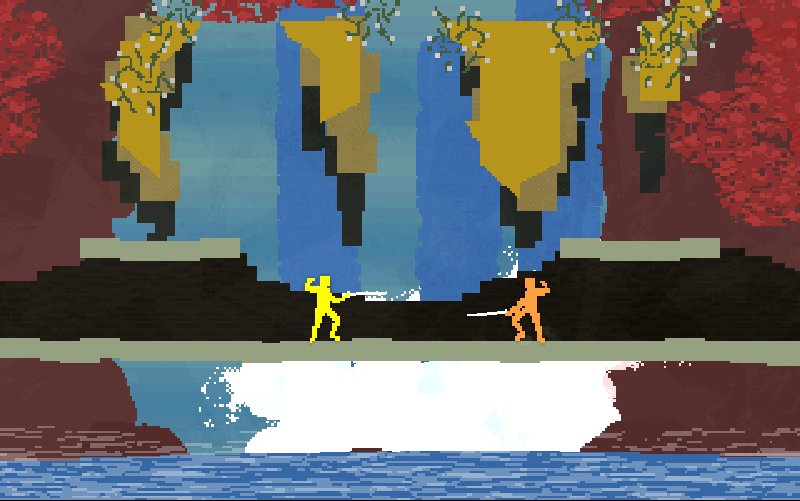|
Micro Mages
''Micro Mages'' is a platform game for the Nintendo Entertainment System that was published on April 30, 2019 by Morphcat Games. The game raised over €150,000 on Kickstarter. The game was published as a physical cartridge for the NES, and later as a digital download, bundled with an emulator, on Steam and Itch.io. Development The game was developed to fit within 40 kilobytes, the size that all games published when the NES was released, such as ''Super Mario Bros.'', had to fit into (later development techniques allowed larger games, such as '' Super Mario Bros. 3''). The game was written in 6502 assembly language. 8 kilobytes of cartridge space was reserved for graphics, while the remaining 32 kilobytes were used for game code. Graphics were reused across levels and animations to save space. Player characters A player character (also known as a playable character or PC) is a fictional character in a video game or tabletop role-playing game whose actions are controlled by ... [...More Info...] [...Related Items...] OR: [Wikipedia] [Google] [Baidu] |
Nintendo Entertainment System
The Nintendo Entertainment System (NES) is an 8-bit home video game console developed and marketed by Nintendo. It was first released in Japan on 15 July 1983 as the and was later released as the redesigned NES in several test markets in the United States beginning on 18 October 1985, followed by a nationwide launch on 27 September 1986. The NES was distributed in Europe, Australia, and parts of Asia throughout the 1980s under various names. As a third-generation console, it mainly competed with Sega's Master System. Nintendo president Hiroshi Yamauchi called for a simple, cheap console that could run arcade games on cartridges. The Famicom was designed by lead architect Masayuki Uemura, with its controller design reused from Nintendo's portable Game & Watch hardware. The western model was redesigned by Nintendo of America designers Lance Barr and Don James to resemble a video cassette recorder. Nintendo released add-ons such as the NES Zapper, a light gun for shootin ... [...More Info...] [...Related Items...] OR: [Wikipedia] [Google] [Baidu] |
MOS Technology 6502
The MOS Technology 6502 (typically pronounced "sixty-five-oh-two" or "six-five-oh-two") William Mensch and the moderator both pronounce the 6502 microprocessor as ''"sixty-five-oh-two"''. is an 8-bit computing, 8-bit microprocessor that was designed by a small team led by Chuck Peddle for MOS Technology. The design team had formerly worked at Motorola on the Motorola 6800 project; the 6502 is essentially a simplified, less expensive and faster version of that design. When it was introduced in 1975, the 6502 was the least expensive microprocessor on the market by a considerable margin. It initially sold for less than one-sixth the cost of competing designs from larger companies, such as the 6800 or Intel 8080. Its introduction caused rapid decreases in pricing across the entire processor market. Along with the Zilog Z80, it sparked a series of projects that resulted in the home computer microcomputer revolution, revolution of the early 1980s. Home video game consoles and home com ... [...More Info...] [...Related Items...] OR: [Wikipedia] [Google] [Baidu] |
Platformers
A platformer (also called a platform game, and sometimes a jump 'n' run game) is a subgenre of action game in which the core objective is to move the player character between points in an environment. Platform games are characterized by levels with uneven terrain and suspended platforms that require jumping and climbing to traverse. Other acrobatic maneuvers may factor into the gameplay, such as swinging from vines or grappling hooks, jumping off walls, gliding through the air, or bouncing from springboards or trampolines. The genre started with the 1980 arcade video game ''Space Panic'', which has ladders but not jumping. ''Donkey Kong (arcade game), Donkey Kong'', released in 1981, established a template for what were initially called "climbing games". ''Donkey Kong'' inspired many clones and games with similar elements, such as ''Miner 2049er'' (1982) and ''Kangaroo (video game), Kangaroo'' (1982), while the Sega arcade game ''Congo Bongo'' (1983) adds a third dimension via I ... [...More Info...] [...Related Items...] OR: [Wikipedia] [Google] [Baidu] |
Nintendo Entertainment System Games
The Nintendo Entertainment System, Family Computer/Nintendo Entertainment System has a library of ' officially licensed games released during their lifespans, plus 7 official multicarts and 2 championship cartridges. Of these, 672 were released exclusively in Japan, 187 were released exclusively in North America, and 19 were released exclusively in PAL countries. Worldwide, 521 games were released. Its launch games for the Famicom were ''Donkey Kong (1981 video game), Donkey Kong'', ''Donkey Kong Jr.'', and ''Popeye (video game), Popeye''. Only first-party titles were available upon launch, but Nintendo started a licensing program the following year that allowed third-party companies such as Namco, Hudson Soft, Taito, Konami, Bandai, and Capcom to create titles and produce their own cartridges for the Famicom in exchange for royalty payments; Nintendo later revised the program to mandate itself as the producer of all cartridges while carrying it with the console outside Japan. ... [...More Info...] [...Related Items...] OR: [Wikipedia] [Google] [Baidu] |
Homebrew Software
Homebrew, when applied to video games, refers to software produced by hobbyists for proprietary video game consoles which are not intended to be user-programmable. The official documentation is often only available to licensed developers, and these systems may use storage formats that make distribution difficult, such as ROM cartridges or encrypted CD-ROMs. Many consoles have hardware restrictions to prevent unauthorized development. Development can use unofficial, community maintained toolchains or official development kits such as Net Yaroze, Linux for PlayStation 2, or Microsoft XNA. Targets for homebrew games are typically those which are no longer commercially relevant or produced, and with simpler graphics and/or computational abilities, such as the Atari 2600, Nintendo Entertainment System, Wii, Nintendo 3DS, Wii U, Genesis, Dreamcast, Game Boy Advance, PlayStation, and PlayStation 2. Several groups within the homebrew community have created unofficial games and softwa ... [...More Info...] [...Related Items...] OR: [Wikipedia] [Google] [Baidu] |
Indie Games
An indie video game or indie game (short for independent video game) is a video game created by individuals or smaller development teams without the financial and technical support of a large Video game publisher, game publisher, in contrast to most AAA (video game industry), "AAA" (triple-A) games. Because of their independence and freedom to develop, indie games often focus on innovation, experimental gameplay, and taking risks not usually afforded in AAA games. Indie games tend to be sold through digital distribution channels rather than at retail due to a lack of publisher support. The term is analogous to independent music or independent film in those respective mediums. Indie game development bore out from the same concepts of amateur and hobbyist programming that grew with the introduction of the personal computer and the simple BASIC computer language in the 1970s and 1980s. So-called bedroom coders, particularly in the United Kingdom and other parts of Europe, made their ... [...More Info...] [...Related Items...] OR: [Wikipedia] [Google] [Baidu] |
2019 Video Games
In the video game industry during 2019, both Sony and Microsoft announced their intent to reveal their next-generation consoles in 2020, while Nintendo introduced a smaller Nintendo Switch Lite, and Google announced its streaming game platform Stadia. The controversy over loot boxes as a potential gambling route continued into 2019, with some governments like Belgium and the Netherlands banning games with them under their gambling laws, while the United Kingdom acknowledging their current laws prevent enforcing these as if they were games of chance. The first video cards to support real-time ray tracing were put onto the consumer market, including the first set of games that would take advantage of the new technology. The Epic Games Store continued its growth in challenging the largest digital PC game distribution service Steam, leading to concern and debate about Epic Games' methods to seek games for its service. '' Dota Auto Chess'', a community-created mod for ''Dota 2'', i ... [...More Info...] [...Related Items...] OR: [Wikipedia] [Google] [Baidu] |
Multiplayer Video Game
A multiplayer video game is a video game in which more than one person can play in the same game environment at the same time, either locally on the same computing system (couch co-op), on different computing systems via a local area network, or via a wide area network, most commonly the Internet (e.g. ''World of Warcraft'', '' Call of Duty'', ''DayZ''). Multiplayer games usually require players to share a single game system or use networking technology to play together over a greater distance; players may compete against one or more human contestants, work cooperatively with a human partner to achieve a common goal, or supervise other players' activity. Due to multiplayer games allowing players to interact with other individuals, they provide an element of social communication absent from single-player games. The history of multiplayer video games extends over several decades, tracing back to the emergence of electronic gaming in the mid-20th century. One of the earliest ins ... [...More Info...] [...Related Items...] OR: [Wikipedia] [Google] [Baidu] |
Sprite (computer Graphics)
In computer graphics, a sprite is a Plane (mathematics), two-dimensional bitmap that is integrated into a larger scene, most often in a 2D video game. Originally, the term ''sprite'' referred to fixed-sized objects composited together, by hardware, with a background. Use of the term has since become more general. Systems with hardware sprites include arcade video games of the 1970s and 1980s; game consoles including as the Atari VCS (1977), ColecoVision (1982), Nintendo Entertainment System, Famicom (1983), Sega Genesis, Genesis/Mega Drive (1988); and home computers such as the TI-99/4 (1979), Atari 8-bit computers (1979), Commodore 64 (1982), MSX (1983), Amiga (1985), and X68000 (1987). Hardware varies in the number of sprites supported, the size and colors of each sprite, and special effects such as scaling or reporting pixel-precise overlap. Hardware composition of sprites occurs as each scan line is prepared for the video output device, such as a cathode-ray tube, without i ... [...More Info...] [...Related Items...] OR: [Wikipedia] [Google] [Baidu] |
Player Character
A player character (also known as a playable character or PC) is a fictional Character (arts), character in a video game or tabletop role-playing game whose actions are controlled by a player rather than the rules of the game. The characters that are not controlled by a player are called non-player characters (NPCs). The actions of non-player characters are typically handled by the game itself in video games, or according to rules followed by a gamemaster refereeing tabletop role-playing games. The player character functions as a fictional, alternate body for the player controlling the character. Video games typically have one player character for each person playing the game. Some games, such as multiplayer online battle arena, hero shooter, and fighting games, offer a group of player characters for the player to choose from, allowing the player to control one of them at a time. Where more than one player character is available, the characters may have distinctive Attribute (rol ... [...More Info...] [...Related Items...] OR: [Wikipedia] [Google] [Baidu] |
Assembly Language
In computing, assembly language (alternatively assembler language or symbolic machine code), often referred to simply as assembly and commonly abbreviated as ASM or asm, is any low-level programming language with a very strong correspondence between the instructions in the language and the architecture's machine code instructions. Assembly language usually has one statement per machine instruction (1:1), but constants, comments, assembler directives, symbolic labels of, e.g., memory locations, registers, and macros are generally also supported. The first assembly code in which a language is used to represent machine code instructions is found in Kathleen and Andrew Donald Booth's 1947 work, ''Coding for A.R.C.''. Assembly code is converted into executable machine code by a utility program referred to as an '' assembler''. The term "assembler" is generally attributed to Wilkes, Wheeler and Gill in their 1951 book '' The Preparation of Programs for an Electronic Dig ... [...More Info...] [...Related Items...] OR: [Wikipedia] [Google] [Baidu] |







